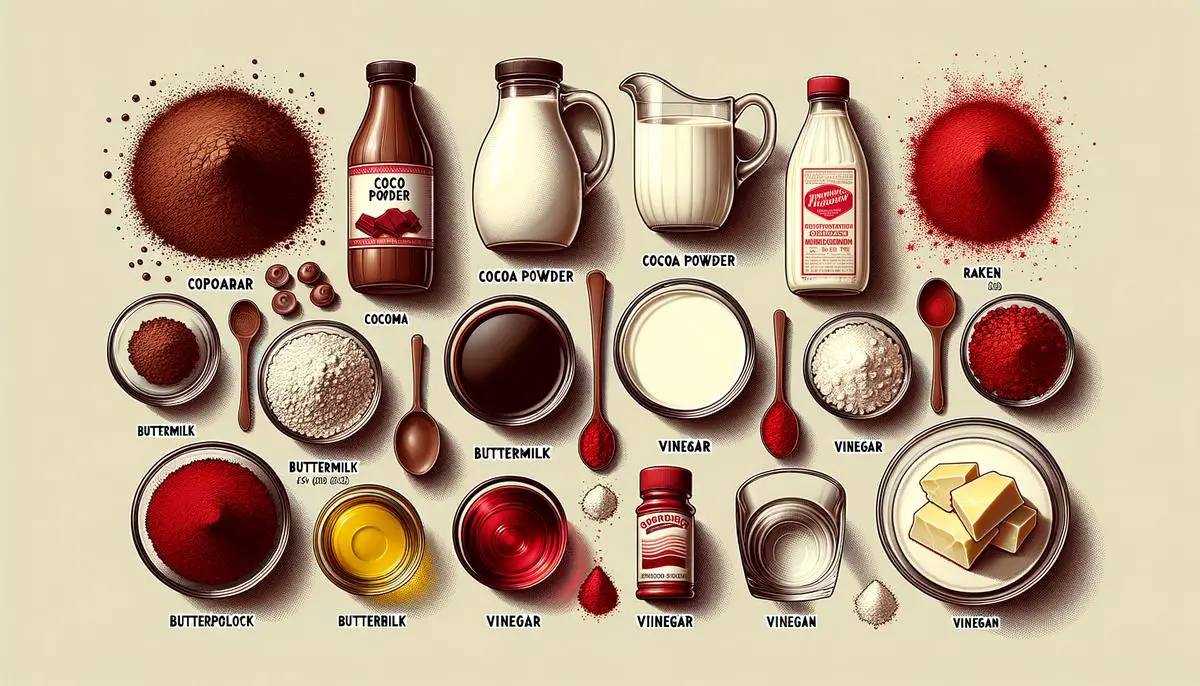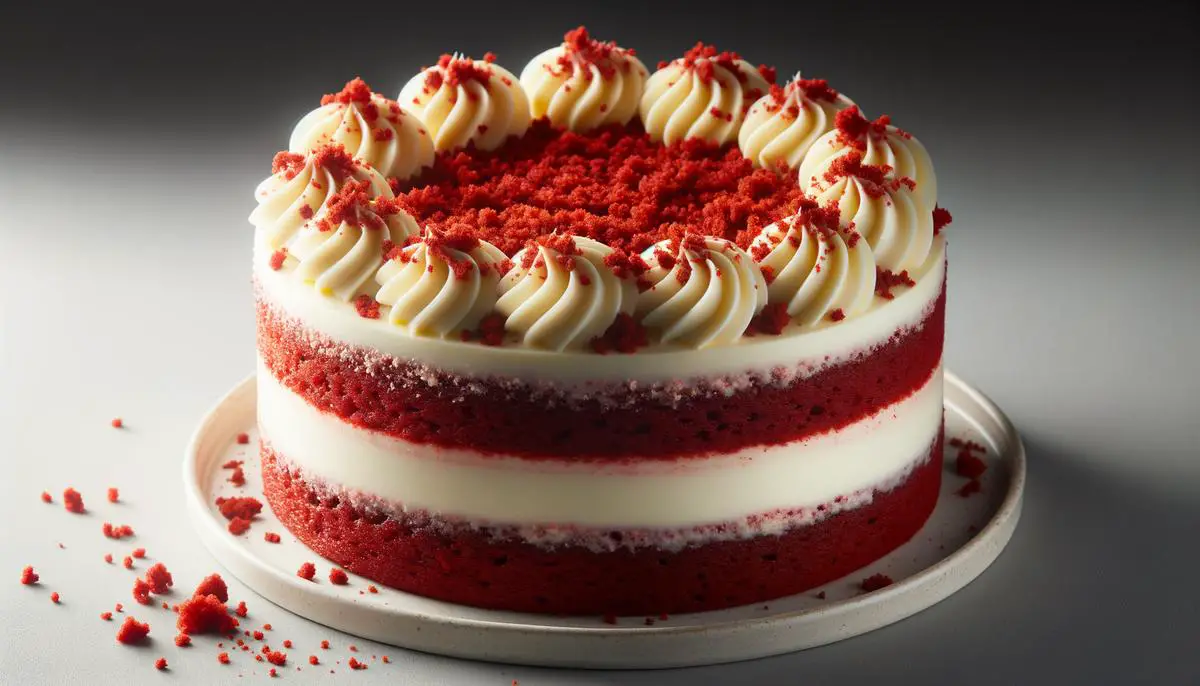
Delve into the world of one of the most captivating treats to grace our taste buds, the red velvet cake, with its luscious texture and eye-catching hue. What gives this beloved dessert its unique flavor and vibrant color? We’re peeling back the layers to reveal the secret ingredients that make red velvet cake a baking marvel. Let’s embark on a culinary adventure, teasing out the delicate balance of cocoa, a tang of buttermilk, a touch of vinegar, and the unmistakable red food coloring that come together to create a taste that’s as rich in history as it is in flavor.
Red Velvet Cake Ingredients
Red velvet cake stands out in the world of desserts with its distinctive, vibrant hue and luxurious texture. Its unique color comes from a reaction between the acidic ingredients like buttermilk or vinegar, and the cocoa powder, which once contained anthocyanins that react to acids. Although today’s processed cocoa powders don’t often have this reaction, the tradition of a red-hued cake has been preserved with the addition of food coloring, making it visually striking. The blend of buttermilk and vinegar also tenderizes the flour, creating a cake that is subtly rich with a fine, smooth crumb that’s incomparable to other cakes.
This charming cake isn’t just about looks and texture; its flavor profile is equally distinctive. While chocolate cakes rely heavily on the robust flavor of cocoa, red velvet takes a more nuanced approach, with just enough cocoa to add a hint of chocolate without overpowering the other ingredients. Typically, red velvet cakes are paired with a tangy cream cheese frosting or a classic roux-based frosting known as ermine icing, which complements the cake’s subtle chocolate essence and adds to its overall allure. This combination results in a balanced symphony of flavors and textures, making it a favorite for celebrations and a timeless classic in Southern baking traditions.

Historical Origins of Red Velvet Cake
Diving into the origins of the red velvet cake, there’s a swirl of stories as rich and deep as the cake’s own crimson hues. The trail of crumbs leads us back to the Waldorf-Astoria Hotel in New York City during the early 20th century. It’s whispered that the lavish hotel first served up this luxurious dessert, captivating guests with its velvety texture and eye-catching color. However, some reckon that the cake was a Southern invention, born out of necessity during the Great Depression when bakers used boiled beet juices to enhance the color of their cakes, making them appear more appetizing.
The lore of red velvet cake is as layered as the cake itself. Eaton’s department store in Canada is also credited with popularizing the sweet treat, thanks to their version of the crimson confection in the 1940s. This notion is further baked by the tale that a Texas-based company called Adams Extract used the alluring allure of the red velvet cake as a clever marketing strategy to sell more food coloring during that era. The cake’s rise to fame was a carefully concocted recipe: a dash of culinary innovation and a heaping scoop of savvy advertising. It’s a reminder that sometimes the stories behind the food we love are as rich as the flavors themselves.
Regardless of its true origin, red velvet cake has whisked its way into hearts and bakeries across the globe. From one oven to the next, the recipe has been passed down and held dear, a testament to the timeless appeal of this cherished dessert. Slice by slice, red velvet cake serves as a sweet slice of history, whether it’s gracing a Southern table or a New York City hotel menu. The allure of red velvet lies not just in its opulent color and flavor, but in the enchanting stories that follow its crumbly trail, a dessert as steeped in mystery as it is in taste.

As we’ve journeyed through the vibrant story of the red velvet cake, from its disputed origins to the staple ingredient list that marks its enchanting identity, we’ve uncovered more than just a recipe; we’ve discovered a slice of culinary heritage. Whether it’s served under the warm glow of a birthday candle or shared as a sweet gesture of Southern hospitality, red velvet cake continues to charm dessert lovers with each crimson crumb. Remember, the next time you savor this classic confection, you’re indulging in a spoonful of history that’s as rich and indulgent as the cake itself.



